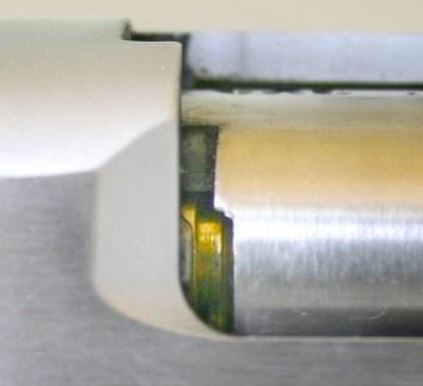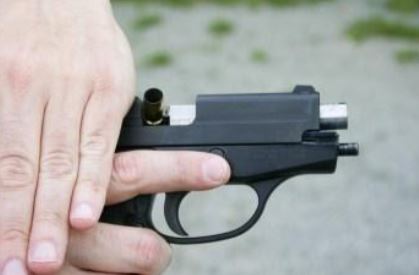Fishing, Hunting and Camping
Tips, articles and reviews by people like you.
How The SmartLure is Looking to Change The Fishing Game as We Know It

As a hobby and sport as old as time, fishing is one aspect of the outdoor world that really hasn’t changed too much. At its very core, fishing is about a connection between angler and fish. Although the ways we do it have shifted, that idea still stays the same.
Because the popularity of fishing as a sport has blossomed, new and improved technological advances have evolved the way fish are caught drastically.
The newest technology to hit the bass fishing industry is the SmartLure. The SmartLure is the world’s first ever intelligent bait that is data-driven. Let’s dive into what makes the SmartLure special and truly unique in this space.
What is the SmartLure
For the first time ever, the bass fishing industry is going to have access to a lure that activity collects and communicates data. Designed by a luremaker with over 40 years in the business, it is clear that the SmartLure is trying to break into another dimension of angling.
The lure itself is similar to a crankbait and uses a bill to dive deep into the water column. There are two treble hooks there to maximize the hookup potential. They come in a variety of the best colorways available to bass fishing. So, at its core, it is still a very good quality lure.
The unique factor comes into play when the technology is introduced. There is a pack in the belly of the lure that has a water detection sensor, charging contacts, and a number of other sensors.
These sensors work to transform the action of the lure into numbers and data. The SmartLure application is the main dashboard backed up by a database where you go to see what has been collected in the water.

What kind of data is being collected?
When the lure is in the water, the technology is constantly sending data to the database. Then, you can later reference what it has captured. However, if the data is not useful to your fishing endeavors, then what is the point? Well, it actually does give you valuable information.
The biggest piece of information translated to you is the path of the lure. It tracks the position of the lure in the water column and all hits of resistance that comes along the way. A hit of resistance refers to hitting the bottom or when a fish bites. This helps you map out the area and give you insight as to where bass are sitting and waiting to strike.

The app also gives you tons of valuable information about your geographical area, weather, tides, and moon stages. These are super important features that can help you adjust your fishing presentations based on your specific situation.
What can you do with SmartLure data?
The best thing you can do with the SmartLure data is better equip yourself with knowledge. The entire idea is to give you insight in real time. Using this data is super important.
For example, the SmartLure tracks the pace and path that you crank it in. You can experiment with different presentations and track which ones produce bites. This is invaluable information as it could directly lead to more bites down the line.
Especially as the company grows and the SmartLure transitions and changes over time, the uses of the lure and app will grow.

Why is it important?
Knowing all of these various aspects will transform you into a much more informed angler. Understanding how bass are feeding and the various patterns thereof could directly translate into more bites down the line.
Knowing what the bass are doing will directly impact how you can produce more quality bites. For example, when using the SmartLure’s mapping features, you can see where the bass like to sit and strike. You can use this information to better present this lure and others on the water.
So, not only is the SmartLure a technically efficient lure, the technology being used is incredibly unique. It is important for the industry to always be pushing the boundaries and seeing what new strategies will become the next best thing. There is a good chance that SmartLure is an example of that.
When will it be available?
Right now, the lure is in development and crowdfunding to pay for the project. However, there is a tentative timeline as to when the SmartLure can hit the masses.
In a couple of months, the company will determine how many lures should be made and find a location fit for production. Around December of 2021, mass production of the lure will commence.
Heading into next year, the Model Zero will be assembled and then distributed to all of the Kickstarter backers who have hopped onto the project. From then on, lures will be developed and produced for the masses as well as new models will likely be introduced.
To stay up to date on all of the SmartLure updates along the way, follow along on social media.
Now that you have a better idea of what the SmartLure is, the last thing to do is to support the project and buy the lure once development has finished. As you can see, this lure is really pushing the limits as to what we can get out of the experience.
SmarLure is not going to be for everyone. There will always be the old fashioned anglers who do not believe in the newest technology, but this lure is not for them. The SmartLure is designed for those who want to push the limits and see what new advances the industry has. If you fall into this category, let the SmartLure take your fishing endeavors to an entirely new level.
To support and keep updated on the project, reference the company’s kickstarter page.
How to Clean Gun Jams and Fix Malfunctions
It is well-known, if some part of the gun moves, it can also jam. Unfortunately, semi-automatics guns are not guaranteed from jams and dysfunctions. If we are talking about gun issues, the action that caused the jam is essential. Understanding that action can assist in making a right and immediate decision on taking the right steps to fix. Taking care of all of our shooting gear is an important part of being safe.
Before we begin, please note that you should always handle a firearm safely. Even when jammed, always have it pointed down range or in a safe direction. If there is a live round in your firearm, it is still live and can fire at any moment.
 Murphy’s law always works; that is why always expect and be prepared that an unexpected issue can arise at the least expected and the worst moment. If we are talking about a dysfunction during a shooting, maybe the best way to fix the problem is to have a backup gun and switch to it. Unfortunately, in the majority of cases, this is not a practical or convenient variant. Anyway, for you as a gun owner, it can be very crucial to master all the reasons that cause specific dysfunction or jams. Practicing issue identification and correcting it as needed can be a game-changer in difficult situations. So, if any dysfunction happens, your knowledge will help you make right decisions
Murphy’s law always works; that is why always expect and be prepared that an unexpected issue can arise at the least expected and the worst moment. If we are talking about a dysfunction during a shooting, maybe the best way to fix the problem is to have a backup gun and switch to it. Unfortunately, in the majority of cases, this is not a practical or convenient variant. Anyway, for you as a gun owner, it can be very crucial to master all the reasons that cause specific dysfunction or jams. Practicing issue identification and correcting it as needed can be a game-changer in difficult situations. So, if any dysfunction happens, your knowledge will help you make right decisions
about what actions to take next. It might sound a bit strange, but a good training scenario includes making your gun fail to practice issue identification and correction. The most important thing you should do when you face any problem with the gun is to entirely hide behind the cover. In case if you don’t cover yourself, you become an easy target and are fully exposed. An important thing to remember: even if the gun is jammed, it is still loaded; you need to be careful with it. In such cases, always keep the muzzle pointed in the safest direction. Only after that follow gun safety mandates. Make sure you are using a gun that functions appropriately. In case you find some serious issues, sending the firearm back to the manufacturer or seeing a gunsmith is also a good idea. Below you will find the primary dysfunctions that you might face:
- Failure to shoot
- Failure to eject
- Double feed
- Failure to go into battery
- Squibs
Failure to shoot
 In case if you hear a click instead of bang during a shot, most probably a so-called failure to shot. A click is considered to be the loudest sound that you will hear during a gunfight. The reason for failure to shut can be the wrongly placed magazine. Make sure the magazine is seated correctly after the loading. If the slide is already pulled back to load the gun, “tap and rack” is the basic way out. In other words, hardly tap the magazine, rack the slide. This action will feed a new round, but in case if the chamber already has a round in it, the “tap and rack” trick will eject the rounds from the chamber. After that, a new round will be stripped from the magazine. It is one of the best techniques to perform every time there is a dysfunction like this.
In case if you hear a click instead of bang during a shot, most probably a so-called failure to shot. A click is considered to be the loudest sound that you will hear during a gunfight. The reason for failure to shut can be the wrongly placed magazine. Make sure the magazine is seated correctly after the loading. If the slide is already pulled back to load the gun, “tap and rack” is the basic way out. In other words, hardly tap the magazine, rack the slide. This action will feed a new round, but in case if the chamber already has a round in it, the “tap and rack” trick will eject the rounds from the chamber. After that, a new round will be stripped from the magazine. It is one of the best techniques to perform every time there is a dysfunction like this.

A weak magazine spring can also lead to a failure to shot. In case if your gun has a continuous feeding problem, most probably it is connected to the magazine itself or magazine spring. Compare your gun’s magazine opening with another to check if the lips are compressed or maybe damaged somehow. Looking for possible dents is also a good idea. Anyway, it is possible that the feeding issue continues even with different magazines.
In this case, it can mean that the magazine is not inserted into the gun well enough. Another problem can appear if you use high-capacity magazines and fill them to the limit. In such cases, the cartridge is affected by excessive pressure, which, as a result, makes it more difficult to seat the magazine properly. If you realize this is the reason for the issue, simply don’t use the full capacity and load a single less round.
TIP: Mark your magazines with different numbers or other symbols underneath the base pad. This will assist in quickly identifying them and saving a lot of time. In case if the magazine doesn’t works properly, the dysfunction can be connected with the firing system. The broken firing pin or week or broken hammer spring can be the reason for this damage. Another way to check these problems is to compare the primer hit depth to another spent case. Look for a dimple; if you don't find it, most likely, the firing pin is broken. In case you find a shallow dimple, this means either a weak or broken spring, or check if the firing pin is broken. If none of the described issues were found in your case, then there can be an ammunition problem. In this case, changing ammunition is a good idea. Besides, try using the round you had problems with when using another gun. Check if the same misfire issue appears.

You can try practicing cleaning drills by mixing your bullets with dummy rounds. One of the best ways to practice this is to ask your friend to load your magazines for you and ask him to add a few dummy rounds. By doing this, you won't know which magazine contains the dummy rounds and when to expect those bullets in the magazine. Another piece of advice is to consider the failure during the training as you would in real life. Remember to always fully hide behind the cover, identify issues, fix it, reload, and shoot again.
Failure to Eject
Problems with ejection can be caused by many factors. The casing can’t extract properly from the chamber in case if the extractor is weak or broken. The so-called stove pipe happens when the casing ejects partially and, as a result, gets caught by the slide. A simple solution to this will be firmly brushing the hand along the slide top. This will help to dislodge the casing or run the tap. After it will rack drill, turning the gun sideways, it will lead to ejection. It is quite possible that the casing, sometimes stove pipe, is so, a lousy ejector can be the reason for this. It is also possible that the main recoil spring is too heavy. As a result, it interferes with slide motion. If the recoil spring works properly and corresponds to the manufacturer's specifications, seeing a gunsmith is a good idea. Both the ejector and the extractor will be checked profoundly. Also, note that a weak charge can be the culprit as well, in case of reloads’ usage.
Double Feed

Such issues like double feeding can happen if the previous round is not ejected. The slide gets a new round from the magazine. As the previous one is still in the chamber, jamming against it happens. In case you face this issue during the gunfight, consider switching to your backup gun. The reason for this is the fact that fixing this issue is much time consuming, and because of this fact, the double-feed is considered as the most significant jams among others. It is required to eject the magazine, empty the chamber and again reload if you want to fix the double-feed issue. After that, the magazine properly lodges the gun, held in by the round it is trying to get. You need to lock back the slide first to release it. Right after that, you should eject the magazine from the gun by pressing the release button. It is quite possible that the magazine is still held tight; if so, some pressure needs to be applied. Racking the slide multiple times if it is required to eject the original round. As soon as the round is ejected, a new magazine can be inserted in the gun to avoid any problems, as the old one may have been damaged. After that, the weapon is ready to fire.
Failure To Go Into Battery
Failure to go into the battery is the process when the round is not correctly placed in the chamber. A dirty gun or bulging round can be the reason to cause this type of issue. In general, the dirty gun slows the slide motion down and reduces the ability to properly push the round into the chamber.

Also, note that bulging rounds are usually found reloaded in case if the resizing die was not completely cycled downward. In these circumstances, you need to hit the slide back. It is possible that the slide doesn’t engage fully. If so, lock open the slide, eject the magazine, use a long and thin object like a pencil to run down the barrel, and dislodge it.
Squibs
Squib is a usual dysfunction connected to noncommercial reloads. Basically, a squib is a round that lodges in the barrel. This can happen if the cartridge doesn’t have any or enough gunpowder. The first alert of this issue is when you hear a pop sound instead of a bang. If you hear the pop sound, you need to stop the shooting very quickly. This could be dangerous, as that sound indicates primer exposure in the empty case. Don’t continue shooting the bullet that blocks the barrel; most probably this will lead to gun exposure. You need to remove the magazine, lock back the slide if you want to fix the squib.
Clearing Revolvers
Compared to semi-autos, revolvers have fewer moving parts, no feeding issues. Instead, jams either are easy to be cleaned or are challenging to clean. There is no in- between. Most of the repeated revolver jams are squibs and high primers. A high primer is a process when the primer slightly protrudes out of the round bottom and doesn’t sit in the casing properly. As a result, this protrusion rubs against the gun frame. This stiffens the cylinder rotation or even jams it completely. If you swing out the cylinder by holding the cylinder-locking mechanism open, it will fix the jam issue. Severe pressure might be required.

Whenever you try to fix a jam issue, remember to keep the gun pointed in a safer place, as a live round is still inside the gun. To fix a squib in a revolver case, use the pencil as described in the semi-auto case. These dysfunction types are the general ones that happen no matter the brand or firearm. That is why practicing problem identification and jam cleaning techniques are vital. Also, remember that in some cases, not all jam issues can be fixed easily; if so, it is much safer to see a gunsmith. Seeing a gunsmith is essential, especially if a live round is causing the problem. Don’t forget to safely lock the chamber open gun before taking it to the gunsmith.




